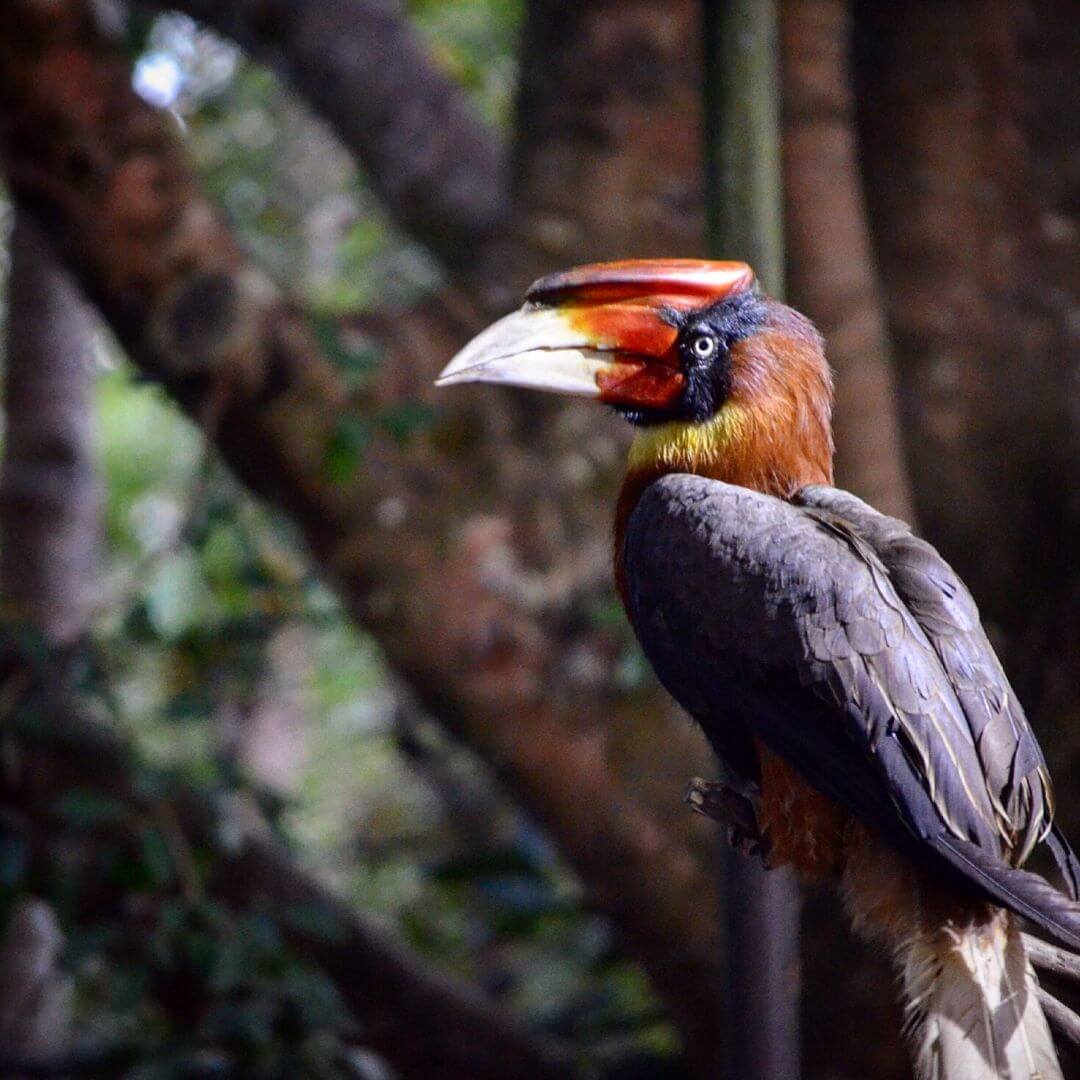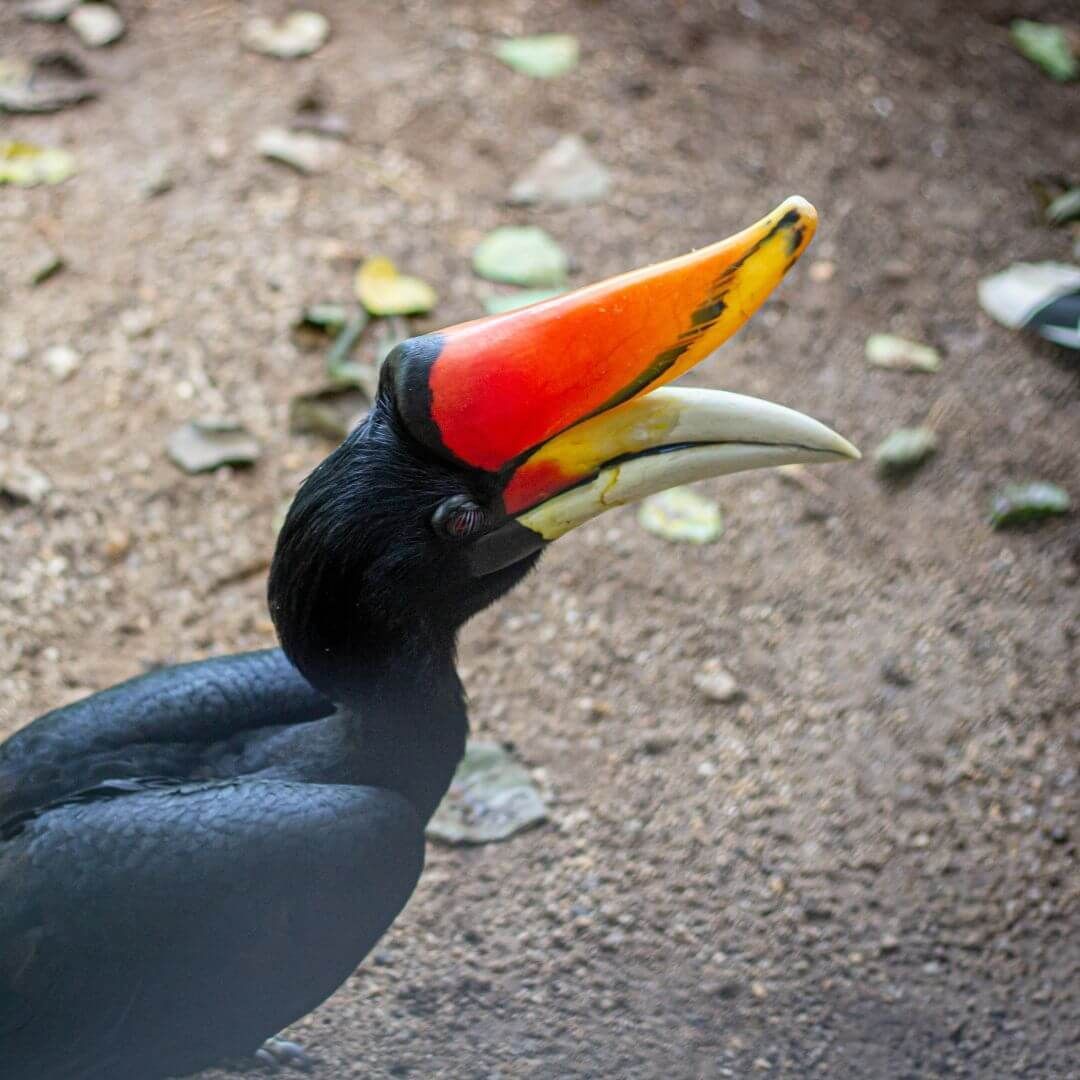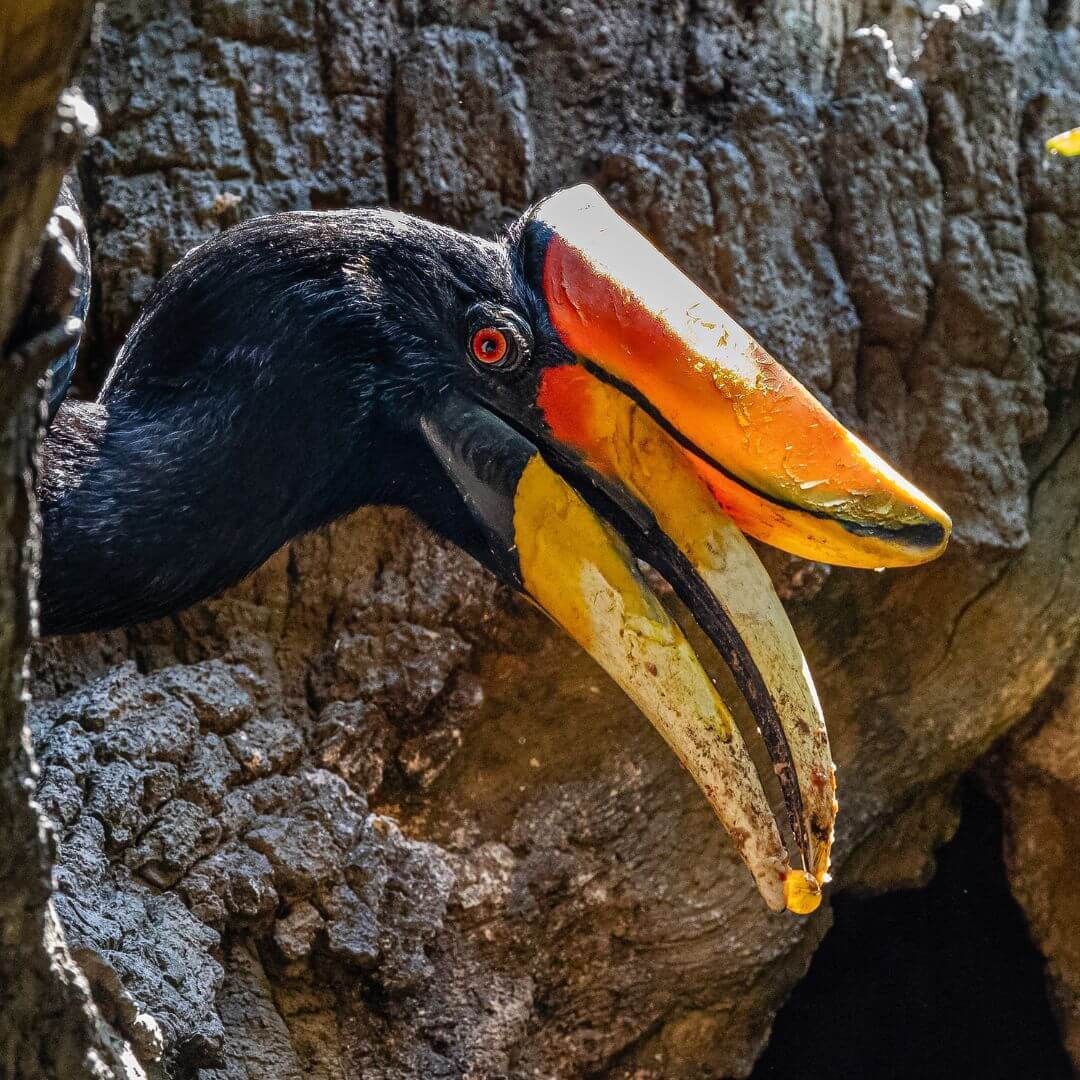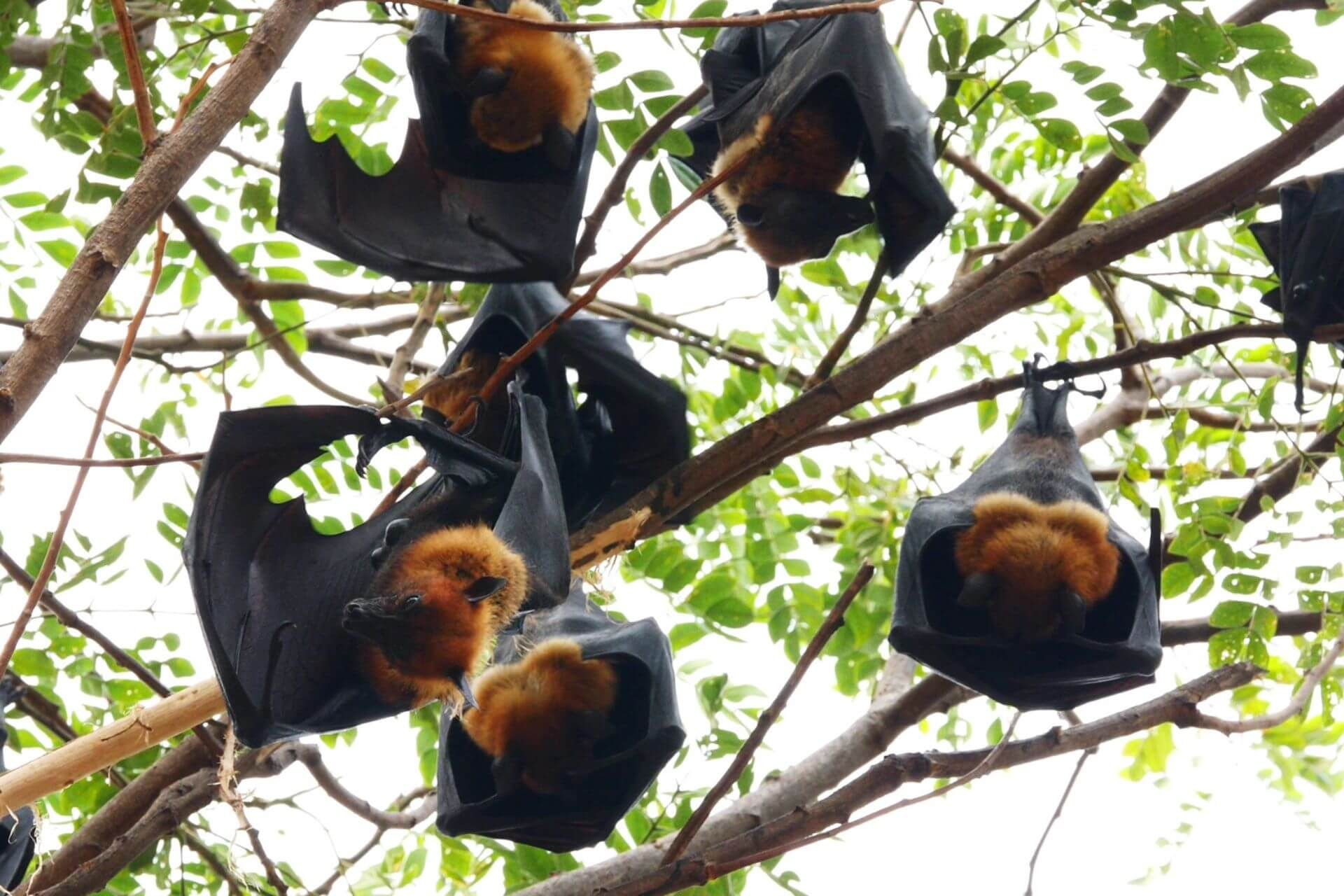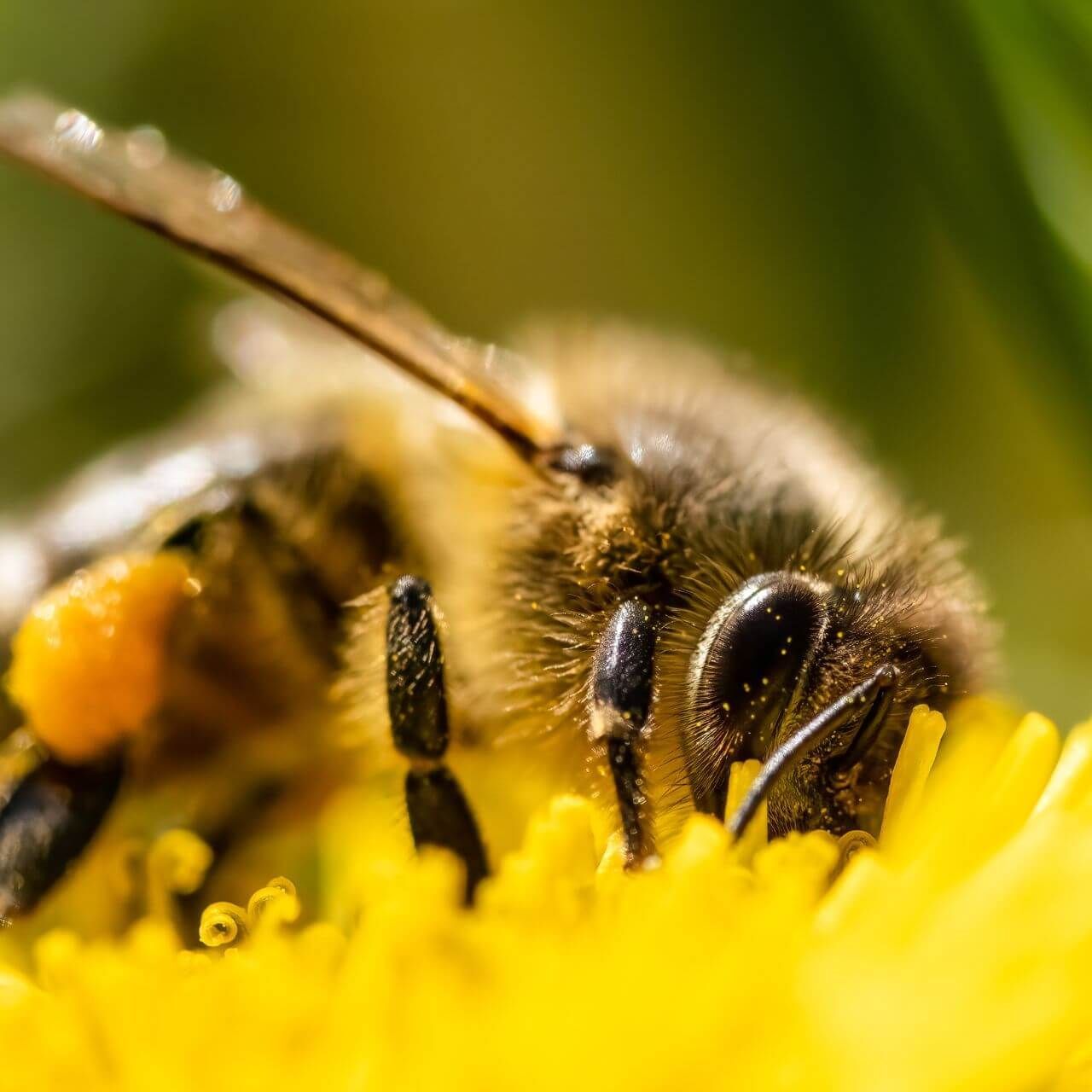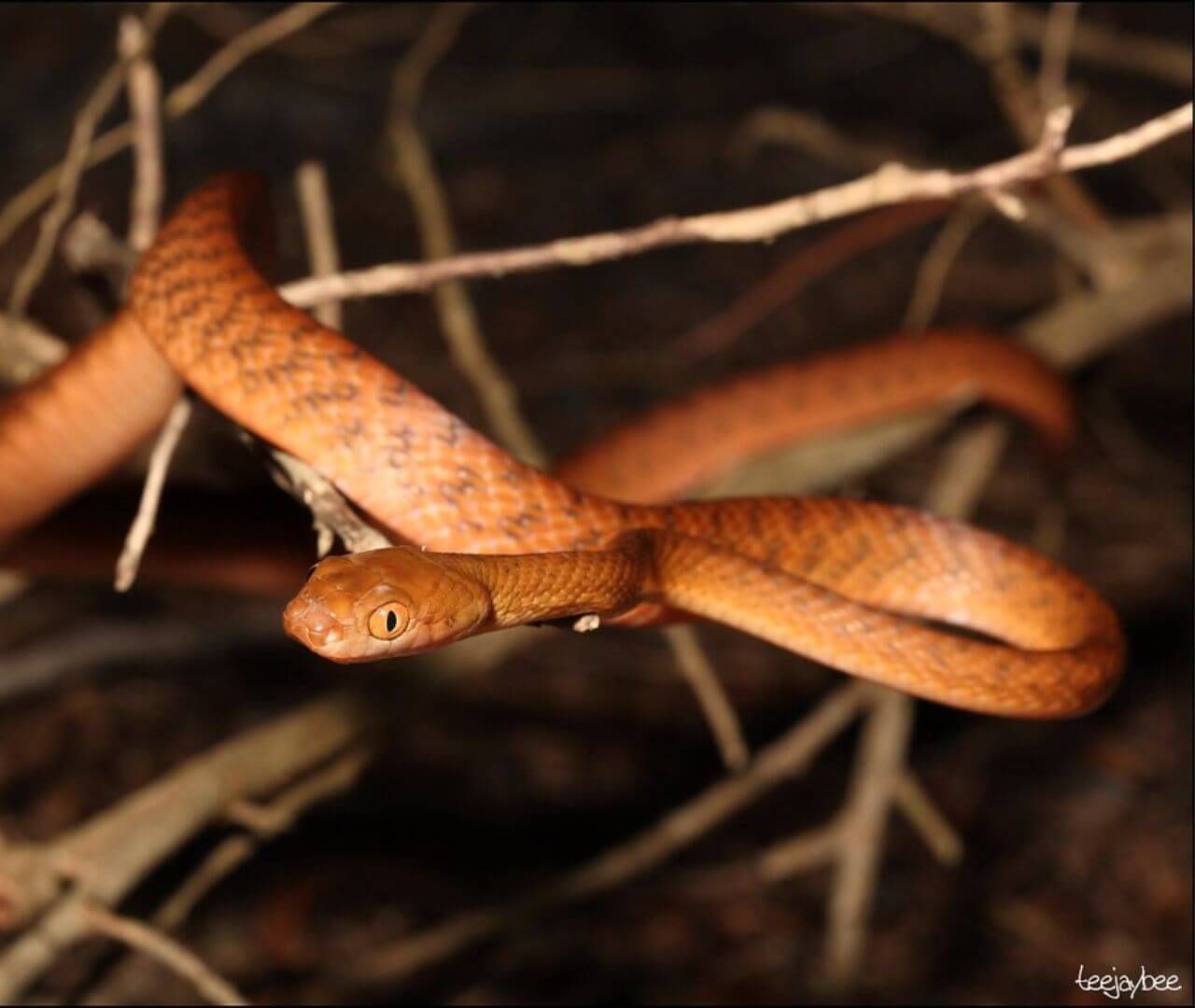Rhinoceros Hornbill
What Is a Rhinoceros Hornbill?
Rhinoceros hornbills are one of roughly 55 species of hornbills. All hornbills are found in Africa or Asia, but rhinoceros hornbills are only found in Southeast Asia and on a few surrounding islands. They live in tropical and subtropical climates in mountain rainforests. Rhinoceros hornbills are typically found in old-growth forests with enormous trees. We’ll come back to this in a bit!
Why Are They Called "Hornbills?"
Hornbills get their name from the large horn-like structure on the beaks of many species. These structures are called casques and have different jobs depending on the species. The rhinoceros hornbill gets its name because it has one of the largest casques of any species. Scientists hypothesize its main purpose is to amplify their sound (make them louder!). Rhinoceros hornbills communicate using a loud honking sound.
Scientists also believe a rhinoceros hornbill’s large casque can be used to impress potential mates and can even be used in combat between males.
Hornbills have a very long beak, so they are commonly confused with toucans. Hornbills and toucans are not related and live on different continents. However, they do have the same habitat, diet, and nesting sites, so they would be in constant competition if they did live near each other!
What Do Rhinoceros Hornbills Eat?
Rhinoceros hornbills are frugivores, meaning most of their diet is fruit. They use their long, colorful bill to pluck fruit from tree branches. They also feed on small animals like lizards and insects. Because of their fruit-heavy diet, rhinoceros hornbills are important seed dispersers in their rainforest home.
Both male and female rhinoceros hornbills have large, colorful beaks and casques, so it can be hard to tell them apart. The bright colors of their beak are actually from being rubbed in an oil they produce on their backs. The easiest way to tell a male and female rhinoceros hornbill apart is by looking at their eyes. Males have a red eye, while females have a blueish-white eye.
How Do Rhinoceros Hornbills Make Nests?
Male and female pairs strengthen their bond at the start of the breeding season. Rhinoceros hornbills are monogamous and will typically breed with the same mate year after year. They even use the same nest if it is still available. To strengthen their bond, they vocalize together and toss fruit to one another.
When it comes time to breed, females begin to prepare their nest. They have a very similar nesting strategy to the great hornbill and a few other Asian hornbill species. Rhinoceros hornbills nest in tree cavities of old-growth trees that are typically formed when a large branch falls from the tree. As a female gets ready to lay her egg, the pair begins to seal the opening of the nest shut with the female inside. They use mushed-up food, mud, and even poop to make the seal. They leave a narrow opening just large enough for the male to pass food to the female and eventually the chick.
The female remains trapped inside the nest sitting on her eggs for several weeks while she relies on her mate to bring her food. Once the chick hatches, the male will be responsible for feeding both it and the female. As the chick grows, the nest becomes cramped, and the female eventually breaks the seal and leaves the nest. They quickly seal the chick back inside and now both parents work to feed it. Once the chick develops its flight feathers, it too breaks out of the nest and starts its life.
Are Rhinoceros Hornbills Endangered?
This nesting strategy keeps the female and chick highly protected, but also have some challenges. If something happens to the male while the female is in the nest, she has no way of getting food. If they cannot find a tree cavity suitable for a nest, they will not be able to raise a chick. With deforestation being a large problem in rhinoceros hornbill habitat, this is becoming more and more of a problem.
We can help rhinoceros hornbills and all rainforest animals by protecting forests. By purchasing items made with sustainable palm oil and buying sustainably produced paper, we can help put a stop to deforestation.
Want To Learn More?
Check out EdZOOcating Adventures' Rhinoceros Hornbill lesson with videos, quizzes, activities, projects, glossaries, and more.
Rhinoceros Hornbill Lesson
$8 (No Expiration Date)Membership
Gain access to 70+ lessons for just $10/month or $100/year.




